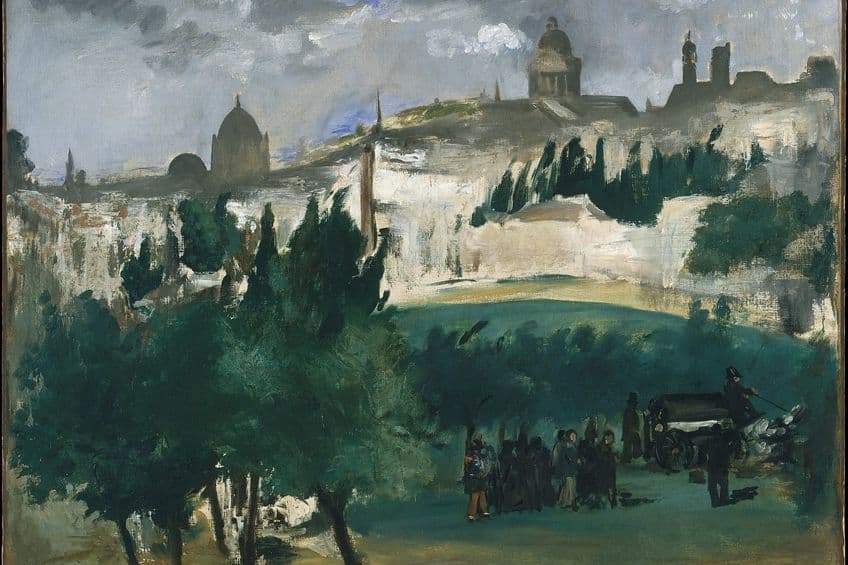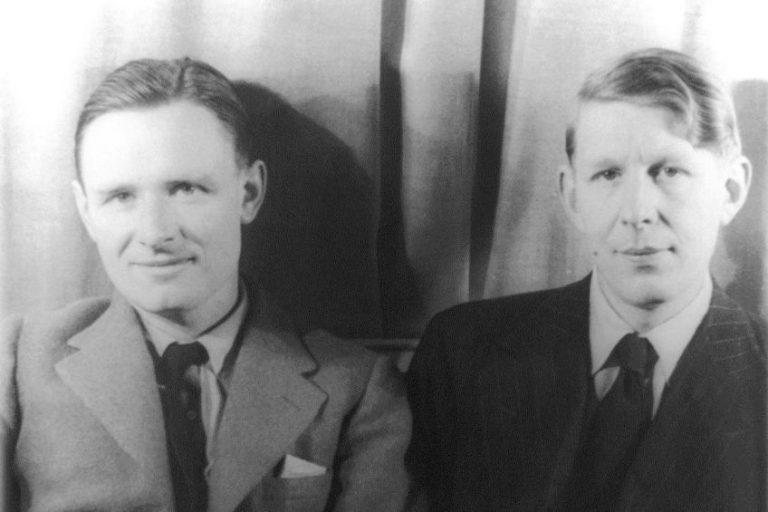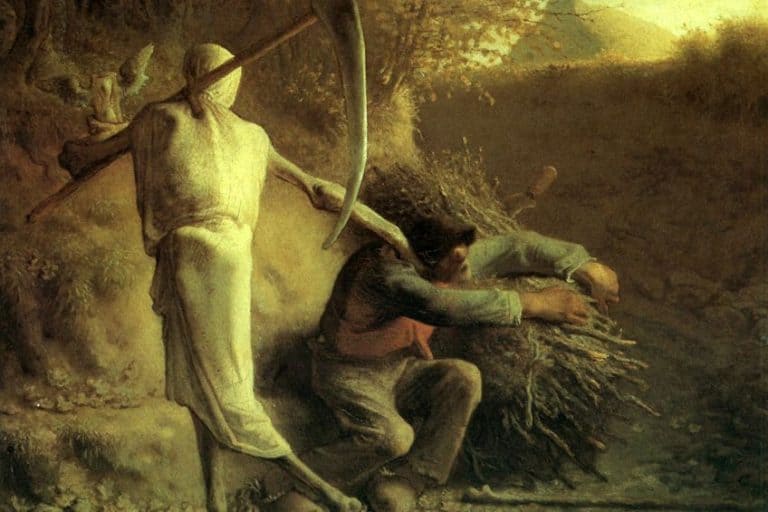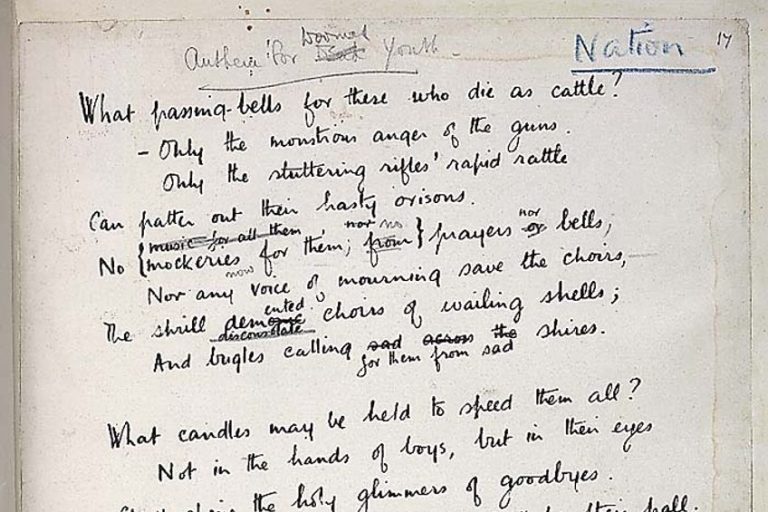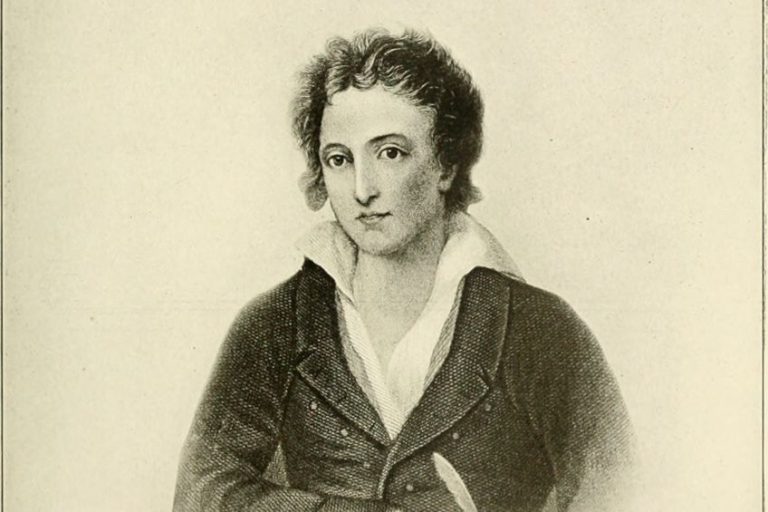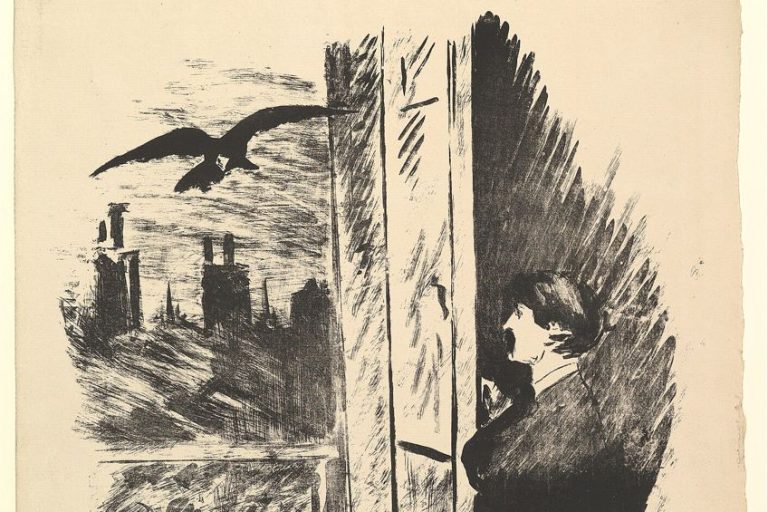“Death Is Nothing At All” by Henry Scott Holland – An Analysis
Today, our focus will be on a Death Is Nothing At All by Henry Scott Holland analysis. This poem, which was also not meant to be a poem, is a fantastic elegy that deserves a bit of love! That’s why I will be giving you a rundown of the poem alongside a discussion of the priest behind it and some of the themes that it explores. If you want a more optimistic elegy, then you can halt your search! The reason is because this elegy is rather good. And the best way to learn more about it is to head into the first section of this article.
Death Is Nothing At All by Henry Scott Holland Analysis
| Date Published | 1910 |
| Type of Poem | Elegy |
| Rhyme Scheme | None |
| Meter | None |
| Topic | Death |
Not everything we see as a poem was intended to be a poem. In the case of Death Is Nothing At All by Henry Scott Holland, it was instead written as part of a far larger text. In this case, that larger text was a sermon. The full sermon was titled “Death the King of Terrors”. This is also quite the title as it was delivered after King Edward VII died. However, while it does sound rather morbid, the poem is actually a rather optimistic elegy. You’ll only know for sure if you keep reading though.

Death Is Nothing At All by Henry Scott Holland Summary Points
While the full article that you are currently reading will give you a good overview of a Death Is Nothing At All by Henry Scott Holland analysis, this summary may help before you even get into that. These are a few points to get you started, but if you want something more in-depth, you’ll need to read more than just this summary:
- Death Is Nothing At All by Henry Scott Holland is an elegy. This means that the poem is intended as an exploration of death. In this case, it has a more optimistic note to it as it focuses on the memory of those who have passed as well as the spiritual belief that they are not entirely gone.
- Death Is Nothing At All by Henry Scott Holland was not originally intended as a poem. While we have come to see this as a poem in the modern day, it was originally written as part of a larger sermon. This sermon was written for King Edward VII, who had recently died when this sermon was preached.
- Death Is Nothing At All by Henry Scott Holland does not follow a standard structure. This poem has variable line lengths and no real rhyme scheme. It was never actually written as a poem but has come to be seen as one. This likely explains why it does not really read like a traditional poem.
And while this has only been a collection of three points, it should be enough for a short and sweet summary. However, if you do wish to learn significantly more about Death Is Nothing At All by Henry Scott Holland, then you will have to read on.
There is still much to discuss.
Biography of Henry Scott Holland
| Academic Movement | Christian Socialism |
| Years | 1847 – 1918 |
| Place of Birth | Ledbury, United Kingdom |
| Known For |
|
Henry Scott Holland was a 19th and 20th-century figure who would go on to be a rather prominent one in the realm of the Church of England. This may cause one to wonder why he has come to be known for a poem that he wrote seeing as he was not actually a poet, and that is true. Instead, he was a figure in the church who was also known for his strong dedication to social justice causes, such as urban poverty.
During his career, he came to work in the church and also at Oxford University as a professor. His work in theology informed many of the sermons that he wrote, and in one of those sermons can be found the poem that we are going to analyze today. So, he may not have necessarily intended it as something to exist by itself, but it can still stand on its own. Other than his work in the church, he founded an organization that worked to fight against poverty in the country. It laid the blame on the state of capitalism at the time, and he would spend much of his life on this cause. His work led to him being a prominent figure during his lifetime.
An In-Depth Death Is Nothing At All by Henry Scott Holland Analysis
When we look at Death Is Nothing At All by Henry Scott Holland, we need to first understand that it is an elegy. What does that mean? Well, it basically means that it will be sad! Or at least, that’s what we typically mean when looking at these kinds of poems because an elegy is a poem about death. However, this particular poem is not one of the sadder elegies out there. It is a poem that is more interested in comforting those who have been left behind, and this makes it a far more optimistic elegy than many that we might otherwise encounter.
In addition to this, Death Is Nothing At All by Henry Scott Holland was not originally intended as a poem and was instead part of a far larger sermon.
This indicates that the text is classified as a free verse poem. It does not have a consistent rhyme scheme or meter. Instead, it is simply a series of stanzas that also do not follow a consistent number of lines, and they aim toward a more positive approach to death while not necessarily following standard rules and conventions of poetry. You will only truly see this once you have started to actually check out this poem. So, let’s do exactly that!
Stanza One
Death is nothing at all.
I have only slipped away to the next room.
I am I and you are you.
Whatever we were to each other,
That, we still are.
The first line of this poem is written in a very nonchalant fashion. It simply states that death is nothing to be concerned about. This is a rather strange and peculiar way to approach the topic of death, but it certainly does have a far more flippant tone than the immensely somber ways in which death is usually discussed in elegies.

The next line informs us that the speaker is the recently deceased. They tell the reader that they have simply departed from this place, they have slipped out, and have gone to the adjourning room. This gives it a very casual and calm kind of a feeling. One in which we can see death as something that simply happens and is part of life rather than something morose. The third line tells us that the speaker is himself and that we are ourselves, and the next lines continue on with this thought that while we are separate entities, we knew each other in life. Regardless of death’s presence, we are still those things.
When our friends die, they are still our friends even if they are not here with us any longer.
Stanza Two
Call me by my old familiar name.
Speak to me in the easy way
which you always used.
Put no difference into your tone.
Wear no forced air of solemnity or sorrow.
The first line of this stanza implores us to continue using the name of the dead. It is easier and better that way. It allows us to continue to communicate with them, even if they cannot respond to us. The three lines that make up the first section reiterate that we must simply speak to the departed as we have always done.
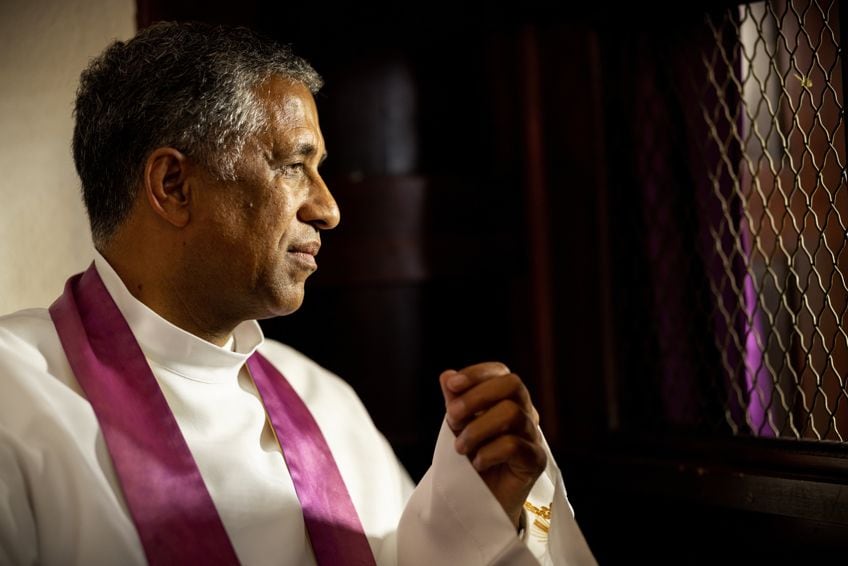
The next two lines tell us that we must not suddenly become serious or try to be all solemn or sad simply because they are dead. Treat them the same way that we did while they were alive! Why would they want you to act any differently simply because they’re dead and gone?
This gives the message of the dead a very positive and jovial spin to it.
Stanza Three
Laugh as we always laughed
at the little jokes we enjoyed together.
Play, smile, think of me. Pray for me.
Let my name be ever the household word
that it always was.
Let it be spoken without effect.
Without the trace of a shadow on it.
The joviality persists into the next section as it tells us that we should continue to laugh as we have always done and keep making jokes. We shouldn’t just become sad because they’re gone, and it certainly isn’t disrespectful to joke about and with the dead, especially if they had been like that in life.

The third line gives us a great means of examining that same thought as it tells us to plan and smile as we think of them. However, there is still religiosity there as it tells us that we should also pray for them. This is not something unusual for those who are religious as praying for someone who is alive is also common practice. The next lines continue on with the idea of saying the name of this person who has passed away.
We should continue to use it without acting as if it is a taboo term that should never be used.
Stanza Four
Life means all that it ever meant.
It is the same that it ever was.
There is absolute unbroken continuity.
Why should I be out of mind
because I am out of sight?
This second to last of the standard-length stanzas tells us that simply because death has come into our lives, that does not mean that life has changed at all. In fact, death is a part of life, and this stanza attempts to affirm that in several ways.

It tells us that all is as it is meant to be, it is the same as it ever was, and there is nothing that has come to be broken because of death. The final two lines serve as a single sentence when they tell us that simply because the speaker is dead, that does not mean he should be put out of mind and ignored.
The dead, especially from a religious perspective but also from the perspective of memory, are still with us in some or another sense.
Stanza Five
I am but waiting for you.
For an interval.
Somewhere. Very near.
Just around the corner.
This last of the proper, lengthier stanzas is more of an informational statement on the realities of death. That is because death will come for us all. It may sound like something bad or scary, but death is coming. The speaker, as one of the dead, is also simply waiting. He is in the afterlife and just waiting around until you get to meet up with him again.

The last two lines really focus on how soon this event is. It’s near and “just around the corner”. This is also a statement that can probably cause many to fear because we do not actually know what happens after we die.
It is a scary unknown, but it is, regardless of that, still something that we cannot avoid, and at least we can be with our loved ones again.
Stanza Six
All is well.
The final stanza is only made up of one line, and that line simply tells us that everything is going to be fine. It’s easy to not believe something like this. We don’t know what death holds, but the speaker is communicating, in the fiction of this poem, from the beyond. So, to them, nothing remains that should be feared.

The Themes of Death Is Nothing At All by Henry Scott Holland
When we take on board the themes that are on display in a poem, we need to read the text carefully to be able to see and understand it all. In this case, as the poem is an elegy, it focuses on death. In more specific terms, it focuses on a more positive view of the end of life. In essence, we are told about the way in which life continues after death, that there is not necessarily a complete and utter end to things because of the death that has come upon us.
Furthermore, Death Is Nothing At All by Henry Scott Holland also explores themes related to the memory of those who have passed, and to a comforting sense of nostalgia.

When someone has passed away, we often think of them and laugh and smile at who they were rather than necessarily focusing on the fact that they are now dead. This immediately depicts Death Is Nothing At All by Henry Scott Holland as a poem that is far more positive and optimistic about the prospect of death itself. It may be a tragedy when someone passes away, but we should instead spend our time focusing on who they were and how they affected us throughout their lives.
There are a great many elegies out there and loads of them have come to be beloved as a means of understanding and coping with the realities of death itself. However, the more positive and optimistic way in which Death Is Nothing At All by Henry Scott Holland presents this to us is likely a breath of fresh air in comparison to the usual kind of immense sadness that can be found in many other elegies. They are not really known for being enjoyable, in the common understanding of that term, after all!
Frequently Asked Questions
What Is Death Is Nothing At All by Henry Scott Holland?
This poem was written by Henry Scott Holland as a sermon rather than a poem. The full sermon, of which the poem is a part, was written for the recently deceased King Edward VII. However, while this was the initial purpose, it has since come to be seen as a powerful elegy that is read at many funerals because of the more comforting portrayal of death that it provides.
Who Was Henry Scott Holland?
Henry Scott Holland was not really known as a poet as much as he was an important 19th and early 20th-century figure in the Church of England. He took a keen interest in social justice and even fought against capitalist-induced poverty. While he may not have been much known as a poet, he certainly was a prolific writer. He produced many sermons and essays throughout his career.
What Are the Themes of Death Is Nothing At All by Henry Scott Holland?
The themes that are explored in Death Is Nothing At All by Henry Scott Holland have to do with death in general, but in more particular terms, it has an optimistic note to it. Many elegies are rather depressing, but this poem explores the life of those who have died by focusing on the memory of them and how they may have passed from this world, but they are not necessarily gone from all of existence.
Justin van Huyssteen is a freelance writer, novelist, and academic originally from Cape Town, South Africa. At present, he has a bachelor’s degree in English and literary theory and an honor’s degree in literary theory. He is currently working towards his master’s degree in literary theory with a focus on animal studies, critical theory, and semiotics within literature. As a novelist and freelancer, he often writes under the pen name L.C. Lupus.
Justin’s preferred literary movements include modern and postmodern literature with literary fiction and genre fiction like sci-fi, post-apocalyptic, and horror being of particular interest. His academia extends to his interest in prose and narratology. He enjoys analyzing a variety of mediums through a literary lens, such as graphic novels, film, and video games.
Justin is working for artincontext.org as an author and content writer since 2022. He is responsible for all blog posts about architecture, literature and poetry.
Learn more about Justin van Huyssteen and the Art in Context Team.
Cite this Article
Justin, van Huyssteen, ““Death Is Nothing At All” by Henry Scott Holland – An Analysis.” Art in Context. March 18, 2024. URL: https://artincontext.org/death-is-nothing-at-all-by-henry-scott-holland/
van Huyssteen, J. (2024, 18 March). “Death Is Nothing At All” by Henry Scott Holland – An Analysis. Art in Context. https://artincontext.org/death-is-nothing-at-all-by-henry-scott-holland/
van Huyssteen, Justin. ““Death Is Nothing At All” by Henry Scott Holland – An Analysis.” Art in Context, March 18, 2024. https://artincontext.org/death-is-nothing-at-all-by-henry-scott-holland/.


